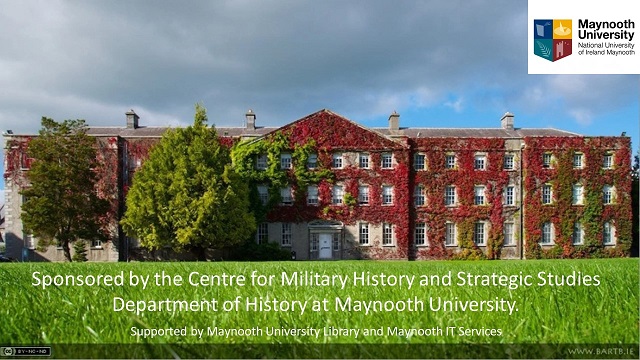Rory Finegan reviews 'Armagh: The Irish Revolution, 1912-1923'. By Donal Hall & Eoin Magennis
Armagh: The Irish Revolution, 1912-1923. By Donal Hall & Eoin Magennis. Four Courts Press (2024), 177pp. ISBN 978-1-80151-080-6
This welcome edition to the Irish Revolution series focusing on Armagh, is particularly timely given the series of commemorations, often contentious, coalescing around the centenary of this visceral period. For the island of Ireland, the period witnessed a maelstrom of events over a remarkably compressed time frame, encompassing the demise of Home Rule, the events of the Great War, and the trauma of the War of Independence. Ulster’s experience of the revolution was very different from the rest of Ireland. Following the Treaty, we see the divergence that remains with us today, the division of Ireland into two self-governing administrations. Indeed the “Ulster Question,†was in many respects the very root cause of the revolution
Where Southern Ireland undergoes bloody Civil War, for Ulster, partition was the defining feature of the period, hence as the authors in this excellent gimlet analysis of Armagh have shown, Ulster’s revolutionary period was irrevocably intertwined with the conundrum of partition. The IRA campaign in Armagh faced a Sisyphean task, the majority Protestant population was actively hostile, yet counterintuitively grasped that “the exclusion or partition of the six counties was an end in itself, and no longer the means of stopping Home Rule,†on the eve of the Treaty in December 1921. Another factor was that republicanism did not garner the same level of support among Catholics as it did elsewhere, the IRA was a peripheral body outside of strongholds in Belfast and south Armagh, hence the conflict in the majority unionist North was very different to that which prevailed in the south. There were divisions within broader pan-nationalism, whereby on various occasions the IRA and the Catholic nationalist fraternal organisation of the Ancient Order of Hibernians (AOH) morphed into violence, including shootings and beatings.
This work also highlights that the dynamic of small-scale IRA operations as witnessed in Armagh and the border region was related to the series of expulsions and pogroms witnessed in Belfast. Indeed, the birth of Northern Ireland was accompanied by heightened communal violence, not witnessed in terms of scale and intensity until the advent of the modern Troubles. Beginning in July 1920 until June 1922, hundreds of lives, mostly nationalists were taken in Belfast, in what the Irish News referred to as “a carnival of terrorism.â€
While Armagh was spared the level of communal violence witnessed in Belfast it did not escape entirely. Hall and Magennis have skilfully linked this sectarian element of the conflict and how Armagh had an unenviable tradition of what was termed “party violence,†with sectarian disputes erupting over territory, marching and the Home Rule debates.
One of the most controversial episodes recalled in this work is the Lisdrumliska and Altnaveigh massacre of six Protestants on 17 June 1922, perpetrated by the 4th Northern Division of the IRA. The rationale for this atrocity has ultimately never been satisfactorily explained but was enmeshed in the ongoing pogroms committed against Catholics in Belfast and the killings of two Catholics by loyalists two days earlier in Armagh. Within the folklore of Protestant culture in Armagh it is still viewed as a haunting spectre and was arguably partly implicit in helping shape the “draconian defensiveness,†of the unionist Government that emerged in its aftermath.
What this work also demonstrates is that the response of the embryonic unionist state was singularly cohesive in its security policy with the development of a strategy that ultimately contained the IRA in Armagh and the wider ‘Province.’ The Ulster Special Constabulary (USC) established in 1920, while universally reviled within the Catholic population was nonetheless highly effective as an internal security force. A key legislative element nested within this overarching strategy was the unleashing of the full capabilities of the Special Powers Act, which anecdotally was used as a template by the South African Government to maintain apartheid.
The de facto “nail in the coffin,†for the IRA in Armagh was the Irish Civil War which vis-à -vis finance and arms haemorrhaged support for the Northern IRA; equally the death of Michael Collins in August 1922 removed the one key ‘Southern’ leader who was dedicated to usurping the nascent Northern statelet.
Even at this remove, the foundation of our own modern state and indeed the establishment of the Northern Ireland state amidst the crucible of violence and counter-violence perpetrated by both sides, remains highly contentious and much debated. This work is an important contribution to this ongoing debate.
Reviewed by Dr Rory Finegan, Department of History at Maynooth University.

 This work is licensed under a
This work is licensed under a 
